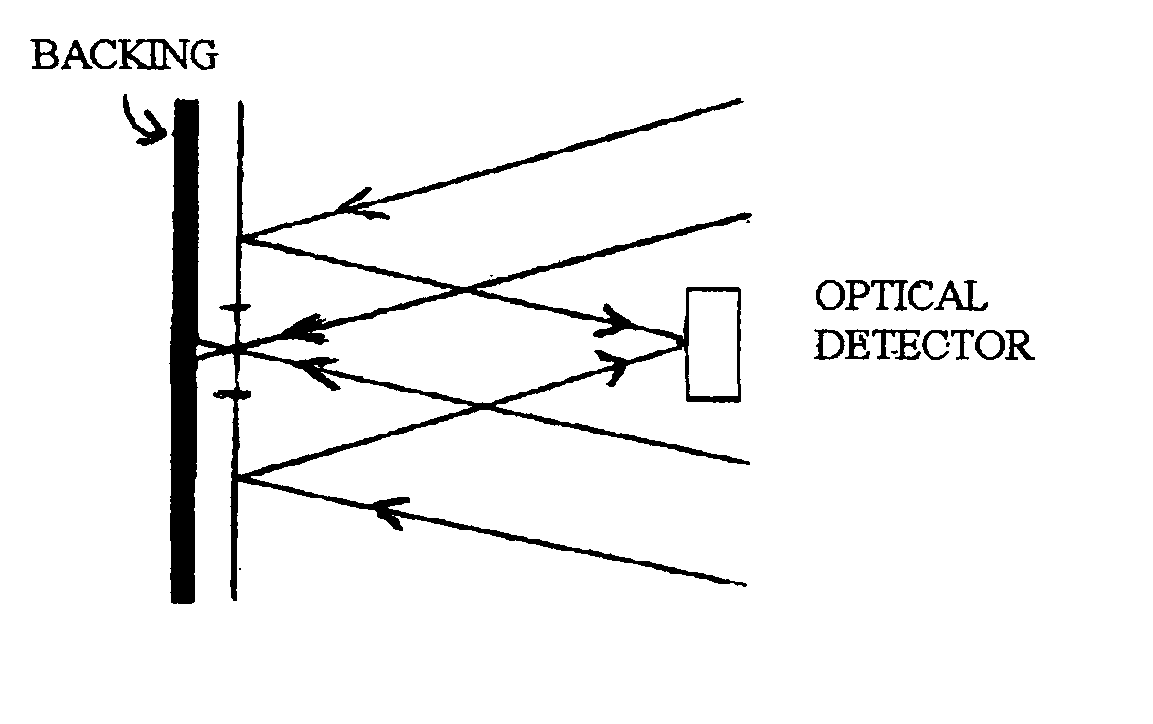Encoding labels without use of ink
a technology of inkjet printing and label encoding, applied in the field of infrared and ultraviolet inkjet printing, can solve the problems of huge sums of money that might not have been invested, and the likelihood of little improvement, and achieve the effect of more cheap printing
- Summary
- Abstract
- Description
- Claims
- Application Information
AI Technical Summary
Benefits of technology
Problems solved by technology
Method used
Image
Examples
first embodiment
[0010] The first embodiment involves punching out holes, squares, bars, and other shapes manually with a tool or tools used as cutting devices designed for the purpose. The labels could be placed on a surface mated with holes to match the punching tool and facilitate cutting (see drawing 4). The shape of the tool's cut or punch may be round, square, rectangular, or whatever is necessary to achieve the desired image. The size of the tools may be varied to achieve the desired result. Since the positioning, spacing, and centering of the data elements may be critical, a template placed either directly over the label or other media, or printed on the media with visible ink may be necessary. Inkjet printing with visible ink for the creation of templates is within easy reach and low in cost. Labels may be used singly, in sheet, or in roll form.
[0011] The second embodiment involves a hand tool that can hold many removable, changeable, cutting devices allowing an entire label, page, or other...
third embodiment
[0012] The third embodiment consists of an automated, computer or microprocessor controlled device that would punch or cut out unwanted areas of the label or other media according to programmable parameters. The design might involve one or more rows of pins that punch out unwanted areas as the media feeds through the encoding device. The shape of the pins may be round, square, rectangular, or whatever is necessary to facilitate achieving the desired data elements. Positioning of data elements would be precision controlled by the automated encoding system. The size of the pins may be varied to achieve the desired result.
fourth embodiment
[0013] The fourth embodiment involves the use of heat. For example, heated pins acting much like the head on an impact printer could burn the shape of data elements through appropriate media This could be done either manually, or with the aid of an automated computer or microprocessor controlled system.
PUM
 Login to View More
Login to View More Abstract
Description
Claims
Application Information
 Login to View More
Login to View More - R&D
- Intellectual Property
- Life Sciences
- Materials
- Tech Scout
- Unparalleled Data Quality
- Higher Quality Content
- 60% Fewer Hallucinations
Browse by: Latest US Patents, China's latest patents, Technical Efficacy Thesaurus, Application Domain, Technology Topic, Popular Technical Reports.
© 2025 PatSnap. All rights reserved.Legal|Privacy policy|Modern Slavery Act Transparency Statement|Sitemap|About US| Contact US: help@patsnap.com



